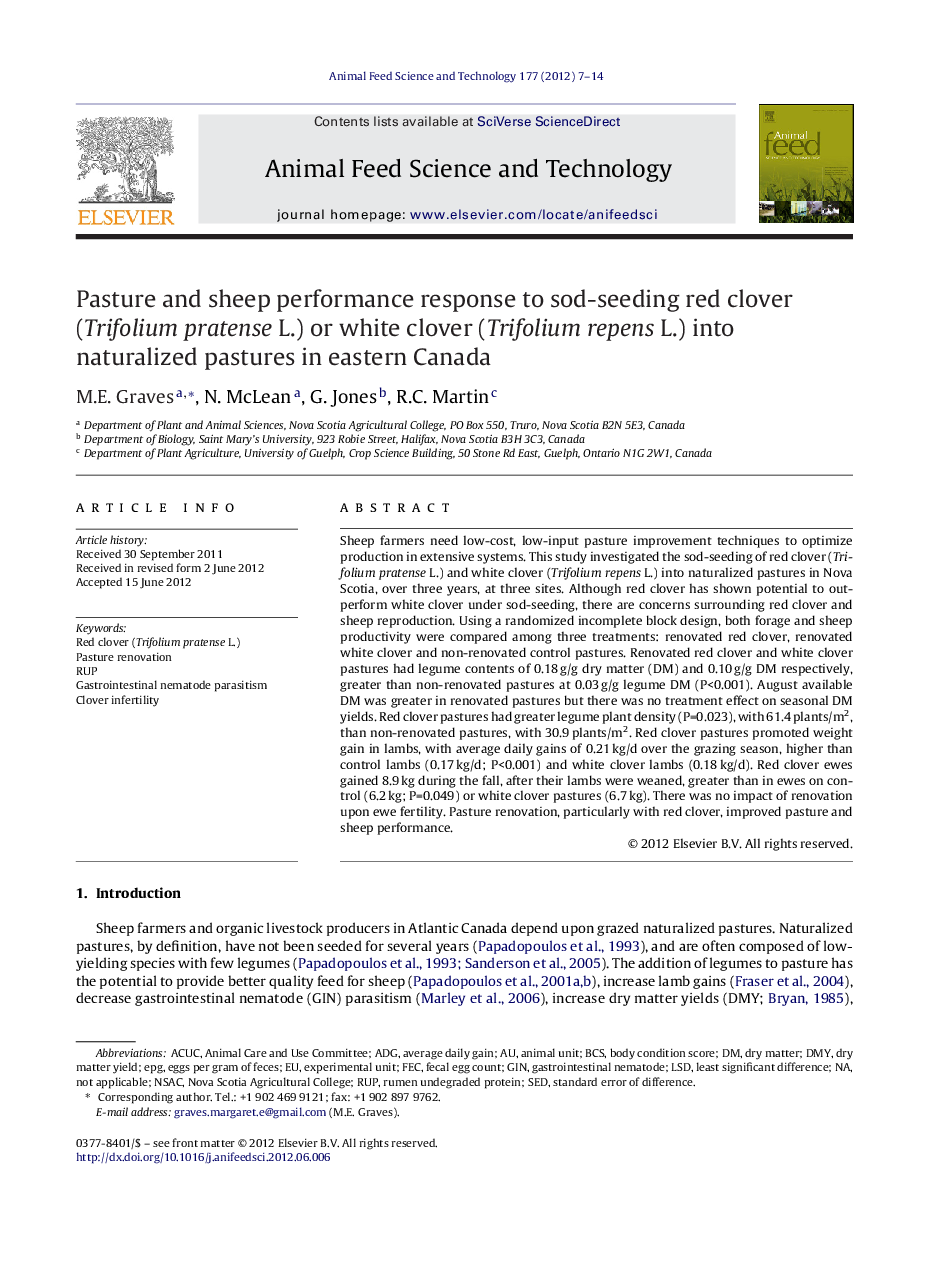| Article ID | Journal | Published Year | Pages | File Type |
|---|---|---|---|---|
| 8492006 | Animal Feed Science and Technology | 2012 | 8 Pages |
Abstract
Sheep farmers need low-cost, low-input pasture improvement techniques to optimize production in extensive systems. This study investigated the sod-seeding of red clover (Trifolium pratense L.) and white clover (Trifolium repens L.) into naturalized pastures in Nova Scotia, over three years, at three sites. Although red clover has shown potential to out-perform white clover under sod-seeding, there are concerns surrounding red clover and sheep reproduction. Using a randomized incomplete block design, both forage and sheep productivity were compared among three treatments: renovated red clover, renovated white clover and non-renovated control pastures. Renovated red clover and white clover pastures had legume contents of 0.18Â g/g dry matter (DM) and 0.10Â g/g DM respectively, greater than non-renovated pastures at 0.03Â g/g legume DM (P<0.001). August available DM was greater in renovated pastures but there was no treatment effect on seasonal DM yields. Red clover pastures had greater legume plant density (P=0.023), with 61.4Â plants/m2, than non-renovated pastures, with 30.9Â plants/m2. Red clover pastures promoted weight gain in lambs, with average daily gains of 0.21Â kg/d over the grazing season, higher than control lambs (0.17Â kg/d; P<0.001) and white clover lambs (0.18Â kg/d). Red clover ewes gained 8.9Â kg during the fall, after their lambs were weaned, greater than in ewes on control (6.2Â kg; P=0.049) or white clover pastures (6.7Â kg). There was no impact of renovation upon ewe fertility. Pasture renovation, particularly with red clover, improved pasture and sheep performance.
Keywords
Related Topics
Life Sciences
Agricultural and Biological Sciences
Animal Science and Zoology
Authors
M.E. Graves, N. McLean, G. Jones, R.C. Martin,
